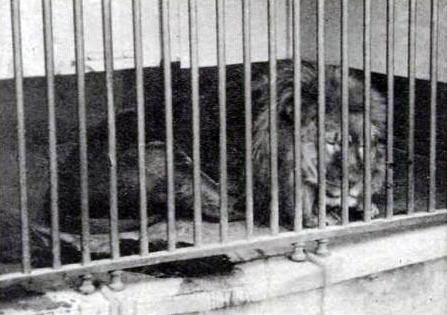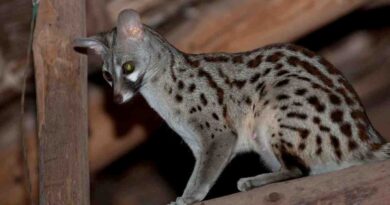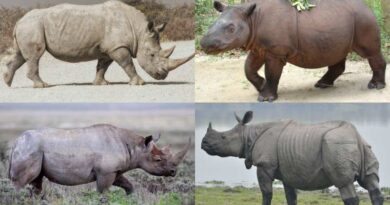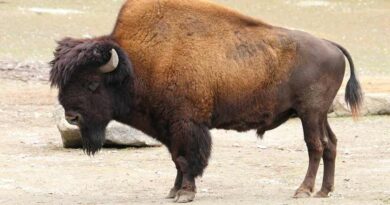The Cape Lion: A Lost Subspecies
The Cape lion became a figure of legend, often noted for its large, darkly coloured body and impressive mane. Its extinction in the middle of the 19th century left only a few preserved specimens, contrasting it with the lighter-colored and lighter-maned East African lions. A capacious, dark mane with a sharply defined border, often accompanied by tawny hairs along the face, distinguished the Cape lion. The mane of these lions extended down to a long belly mane, with the hairs being the longest anterior to their hind limbs. The “bulldog appearance”, with a deep, heavy rostrum, was another unique feature that made the Cape lion stand apart from other lion populations.
In 2019, the popular show Extinct or Alive, season 2, brought the Cape lion back into focus. Host Forrest Galante and his team ventured into Zimbabwe after hearing reports of an abnormally large lion with a black mane. They collected DNA samples from this lion and conducted a lab analysis. Their findings showed that the lion’s DNA was 14% different from that of the modern African lion, sparking debates about whether the Cape lion could still be roaming Africa.
Though the extinction of the Cape lion is widely accepted, some specimens remain in museums around the world. Two undisputed male skulls and one female skull are part of what little is left to study. However, claims of additional specimens have been tentative and often called into question. Interestingly, these lions possessed a fully developed P2 in their lower jaw, a trait absent in other modern lions and extant felids but present in more ancient stemfelids like the Miocene basal felid Pseudaelurus and the Late Miocene sabertooth Paramachairodus. This unusual atavistic trait, though fascinating, remains obscure in its function.
1. Taxonomy
The geographic distribution of the Cape lion is still unknown, though previous suggestions placed it across the Cape Province, possibly extending to Natal. However, this idea has been questioned over time. The available evidence now tentatively suggests that the Cape lion lived mainly in the interior of the western part of the region, while the eastern coastal regions were likely inhabited by Kruger lions (Panthera leo krugeri). These regions are separated from the plains north and west of Cape Town by the Eastern Escarpment, a significant mountain range. The exact time of the Cape lion’s extinction remains obscure, but they were already getting rare by the 1850s and likely disappeared in the 1860s. Very little is known about this lion form, though many believe it was a distinct subspecies.
2. Zoological specimens
Various natural history museums around the world house Cape lion specimens, showcasing the rich history of this extinct animal. The Transvaal Museum holds a female Cape lion skull, while the Naturalis Biodiversity Center has a mounted specimen. Additionally, two Cape lion skulls are preserved in the Natural History Museum, London, and the Paris Museum of Natural History features a mounted Cape lion. In Sweden, the Swedish Museum of Natural History also preserves a Cape lion skull. Other notable specimens include a mounted specimen at the Zoological Museum Amsterdam and a stuffed Cape lion at Clifton Park Museum, Rotherham. A particularly unique two-year-old stuffed specimen of a small cub was discovered in the African Museum by Dr. Emil Holub in Holice, Czech Republic, and identified as a Cape lion in 2009.
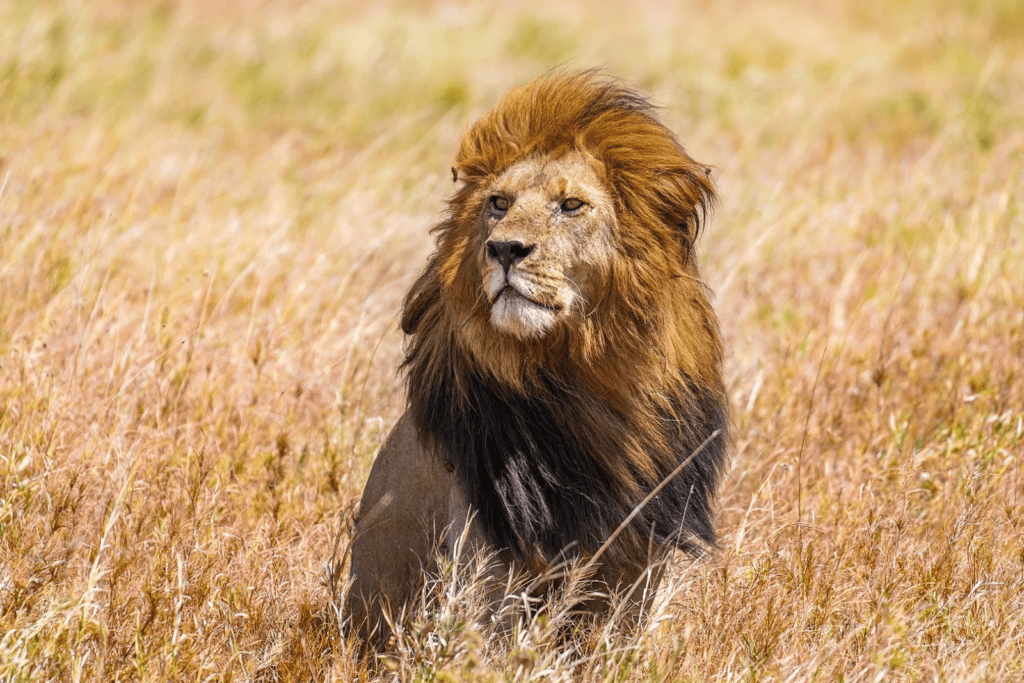
3. Characteristics
The Cape lion was renowned for its very large size and distinctive appearance. Described as having black-edged ears and a black mane that extended beyond the shoulders and covered the underbelly, this lion stood out from other African lions. Two lion specimens housed in the British Natural History Museum provide insights into the Cape lion’s skulls, showing they were shorter in the occipital regions compared to other lions from South Africa. There was also a tendency for the Cape lion to develop a second lower premolar, a rare trait among lions, as noted by American zoologist Edmund Heller. These lions were noted for being distinctly bigger than others, with some weighing nearly 272 kg (600 lb). One such lion was shot south of the Vaal River in the 19th century.
The Cape lion was considered the second-largest and heaviest among lion subspecies. Males could grow up to 9-11 feet long and weigh between 425-500 pounds, while females, known as Cape lionesses, reached lengths of 7-9 feet and weighed around 325-425 pounds. The Cape lion’s thick black mane, which extended down to its shoulders and underbelly, was a notable feature. It had a gold fringe bordering its face, with the tips of its ears also appearing black. This impressive mane could change in appearance based on climatic variables, becoming darker and longer during cooler seasons.
A 2023 study confirmed that the Cape lion’s mane exhibited the same dark-light colour variation as other lions, meaning that mane colour was not a particularly distinctive trait of this population. Despite its large size and dramatic black mane, the Cape lion shared many characteristics with other African lions, both in physical structure and in how climatic factors influenced its appearance.
4. Cape lions’ hunting habits
Cape lions were known to hunt large ungulates such as antelopes, zebras, giraffes, and buffaloes. They occasionally targeted donkeys and cattle brought by European settlers. Some old or weak lions with bad teeth even turned to man-eating when they could no longer catch their usual prey. According to Ahuin Haagner in his work on South African Mammals, these lions were big enough to scare elephants, although they did not typically hunt them. Wanderers who were cast out of their prides sometimes opted to live alone. While the Cape lion had the ability to kill various animals, it preferred hunting large game over smaller prey.
5. In captivity
In 2000, it was asserted that descendants of the Cape lion were found in captivity in Russia. Two of these lions were brought to South Africa by John Spence, a South African zoo director who was fascinated by the grand lions once said to scale the walls of Jan van Riebeeck’s Fort de Goede Hoop in the 17th century. Spence spent over 30 years studying journals to discern their distinct features, including their long black mane, black ears, and larger size. After his long search, he discovered black-maned lions in Novosibirsk Zoo, Siberia, a population of 40 cubs produced over a 30-year period. With help from Schönbrunn Zoo, Vienna, he brought two cubs to Tygerberg Zoo in hopes of breeding them and conducting DNA testing to establish if they were true descendants of the original Cape lions. Sadly, the lions died in 2010, and the zoo closed in 2012.
The Cape lion population disappeared rapidly after European contact, primarily due to hunters and sportsmen, rather than habitat destruction. Dutch and English settlers hunted these lions to extinction, and as civilization spread, the vast game herds, which were an important food source for the lions, were also wiped out. This likely contributed significantly to their extinction.
Recent genome investigations into the Cape lion have aimed to determine if they were truly a distinct subspecies. These studies include examining specimens from various museums like the Field Museum and the South African Institute in Cape Town, alongside analyzing DNA from historical skulls. By comparing genomic data from 118 lions and 53 other lions, scientists hope to uncover the lion’s genetic characteristics and establish a connection between historic and contemporary populations in southern and eastern Africa. However, the results are limited due to the scarcity of samples.
Cape Lion’s Questions & Answers
Does the Cape lion still exist?
The Cape lion has sadly vanished from the wild, with its numbers declining rapidly. The exact year of its extinction is unknown, but the last known Cape lion was killed in 1858. After that, the final members of this subspecies were hunted down in Natal by General Bisset in 1865. Today, the Cape lion is a memory of the past, and its existence in the wild is no more.
Is there a lion with Cape lion DNA?
The Cape lion is not considered a separate species or even a separate subspecies, but rather part of a larger population of lions. Surviving lions in southern Africa may carry some genes from this extinct line. However, many experts believe that focusing on the conservation priorities of existing lion populations is more important than breeding back a phenotype from the extinct population. The focus should remain on protecting the genetic diversity of current lion populations rather than trying to recreate what has been lost.
Are Cape lions the biggest lions?
The Cape lion is known as the second largest and heaviest of all lion subspecies. They could weigh over 600 pounds, making them 1 1/2 times larger than the traditional African Lion. What sets them apart is their large size and the thick black mane that extends over their shoulders and underbelly, with a beautiful gold fringe bordering their face. This striking appearance distinguishes them among lions, although they are not the largest overall.
When was the last Cape lion killed?
The Cape lions were among the largest and darkest of the sub-Saharan lions. The last known Cape lion was killed in 1858, marking a tragic moment in the history of these magnificent animals. Since then, researchers have disputed whether the Cape lion should be considered a true species or merely a subspecies of the African lion, especially given their extinct status.
Why did Cape Lions go extinct?
The Cape lions (Panthera leo melanochaitus) are now extinct, once roaming the grassland plains of the Cape Flats in the Western Cape Province of South Africa. They were likely eradicated due to overhunting and significant habitat loss that occurred after European colonization. These factors combined led to their unfortunate decline, ultimately causing the disappearance of this majestic subspecies.
What did Cape Lions look like?
The Cape lion was a type specimen that was described as very large with unique features like black-edged ears and a black mane. This mane extended beautifully over its shoulders and even down to the underbelly, giving it a majestic appearance. These distinctive traits made the Cape lion a remarkable sight in the wild, showcasing the beauty of this now-extinct subspecies.
How many Cape lions are left?
The Cape lion, also known as Panthera leo melanochaita, is extinct in the wild. Due to relentless hunting and habitat destruction, their population faced a sharp decline. The last confirmed sighting of a Cape lion was in the early 1800s, which marked the end of a once-great species that roamed freely in its natural habitat.
